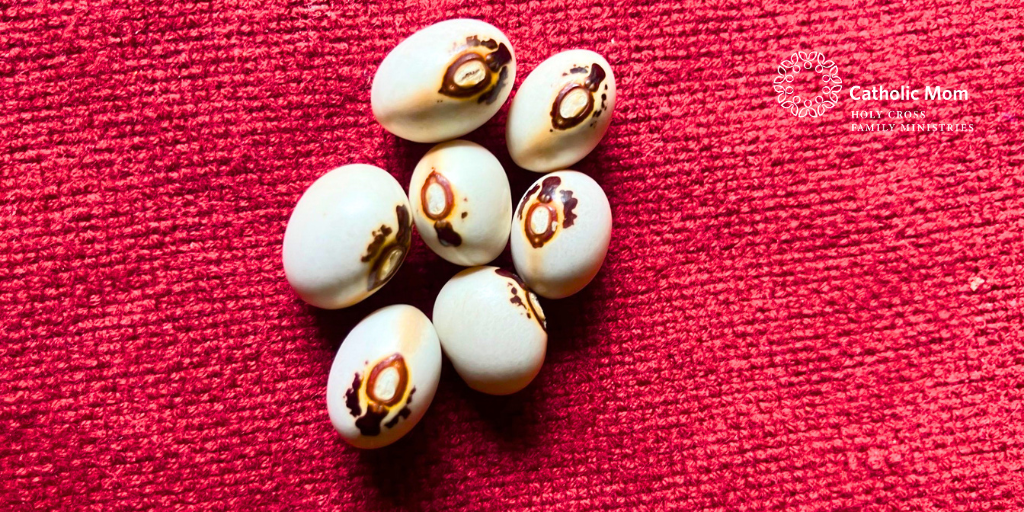
Kathryn Swegart marvels at God’s creation as seen in the amazing image imprinted on a humble bean.
One day after Mass my friend Maureen opened an envelope filled with a surprise, the likes of which I had never seen before. Inside a small bag were white pole beans. Nothing unusual there. I looked more closely and saw an image stamped on the beans. The images appeared to be a monstrance with a yellow light emanating from it. My first reaction was that the image was hand painted. How could that be? No, the tiny image was not man-made. Here was a natural phenomenon.
The Monstrance Bean
Maureen then handed me a paper with the title "The Legend of the Monstrance Bean." During World War I, a French pastor buried church treasures to prevent looting. To provide more cover for the treasures, he planted beans over the hidden treasures. The seeds grew into tender, green pods and matured into flat pods that contained dried beans. He split open the pods. To his great delight, each bean bore the impression of a monstrance. For that priest, immersed in a brutal war, it must have been a source of encouragement. The bean was also a source of food: tasty, stringless, and even edible at the lumpy pod stage.
My Plans for the Beans
You might be curious about what I plan to do with this bag of beans. To be frank, I tend to bungle efforts to grow plants from seeds. My one success has been the proliferation of pink poppies. I scatter seeds in the fall and watch as they grow up around my statue of Saint Francis of Assisi.

I researched where to buy more of these seeds. An internet search of seed suppliers brought me to the UK, Australia, France, and the Netherlands. Monstrance beans are of a rare heirloom variety. They also go by the name Angel Climbing French Beans or the Sacred Bean. Some people see the image as an angel in flight. Once planted in the soil, they grow along trellises that blossom into orange-red flowers. I looked closely at the blossoms and thought they resembled lobster claws. That is just how people living in Maine tend to see the world. Think Maine. Think lobster.

Maine is also known for its short growing season. I will tuck the seeds in a safe place and wait for next year. Maple leaves will turn brilliant orange and red. Blizzards will blow snowdrifts against the back door. Patches of bare ground will appear in March. On planting day, I will recall a passage from the Gospel of Mark. A farmer plants seeds … "and would sleep and rise night and day and the seed would sprout and grow, he knows not how" (Mark 4:27).

I do not really know how a seed grows, how a bird flies, nor how a caterpillar turns into a butterfly. Now I study the delicate image on humble beans. I hold it in my hand and ponder. Nature is God’s masterpiece, abundant in beauty, and sometimes painted with a tiny paintbrush.
Share your thoughts with the Catholic Mom community! You'll find the comment box below the author's bio and list of recommended articles.
Copyright 2025 Kathryn Swegart
Images: Flower photo copyright 2025 Heritage Seed Library at GardenOrganic.org.uk, all rights reserved, used with permission; all others copyright 2025 Kathryn Swegart, all rights reserved.
About the Author

Kathryn Swegart
Kathryn Griffin Swegart is an award-winning author of Catholic books for children. Kathryn and her husband raised three children on a small farm in rural Maine. She is a professed member of the Secular Franciscan Order and contributor to Magnificat. Visit her website at KathrynSwegart.com.


.png?width=1806&height=731&name=CatholicMom_hcfm_logo1_pos_871c_2728c%20(002).png)
Comments